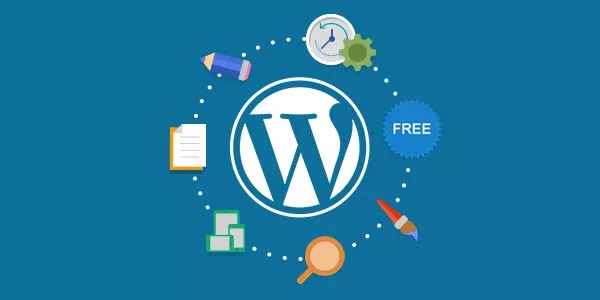In today’s digital world, having a website is essential for businesses, bloggers, and creatives alike. WordPress, a versatile and user-friendly content management system (CMS), is a popular choice for website development due to its ease of use and powerful features. This blog will guide you through the process of using WordPress for website development, ensuring you create a professional and effective online presence.
What is WordPress?
WordPress is an open-source CMS that allows users to create and manage websites without requiring extensive technical knowledge. It offers a wide range of themes and plugins, enabling customization and functionality enhancements to meet various needs.
Benefits of Using WordPress
- User-Friendly: WordPress has an intuitive interface, making it accessible even to beginners.
- Flexible and Customizable: With thousands of themes and plugins, you can tailor your website to your specific needs.
- SEO-Friendly: WordPress was created with SEO in mind, making it easy to optimize your website for search engines.
- Community Support: A large, active community of developers and users provides extensive support and resources.
Getting Started with WordPress
1. Pick a hosting provider and domain name.
Before you can start building your WordPress site, you need a hosting provider and a domain name.
- Hosting Provider: Choose a reputable hosting company that provides WordPress hosting. Bluehost, SiteGround, and HostGator are among the most popular solutions.
- Domain Name: Your domain name will be your website’s address (for example, www.yourwebsite.com). Select a domain name that is memorable, relevant to your brand, and easy to spell.
2. Install WordPress
Most hosting companies give a one-click WordPress installation option. Here’s a general overview:
- Login to Your Hosting Account: Access your hosting account’s control panel (cPanel).
- Find the WordPress Installer: Look for a WordPress or website builder section in the cPanel.
- Install WordPress: Follow the prompts to install WordPress. You’ll need to choose your domain name, create an admin username and password, and fill in some basic site information.
3. Choose a Theme
Themes govern your WordPress site’s look and layout. There are free and premium themes available.
- Access Themes: Go to Appearance > Themes > Add New in your WordPress dashboard.
- Browse and Preview: Browse through the available themes and use the preview function to see how they look.
- Install and Activate: Once you find a theme you like, click Install and then Activate to apply it to your site.
4. Customize Your Site
After activating your theme, you can customize it to suit your needs.
- Customize Appearance: Customize Appearance. To enter the WordPress Customizer, select Appearance > Customize. Here, you can modify various aspects of your theme, such as colors, fonts, and layout.
- Add a Logo: In the Site Identity area, you may upload your logo and choose the site title and tagline.
- Create Menus: Navigate to Appearance > Menus to create and manage your site’s navigation menus.
5. Install Plugins
Plugins add functionality to your WordPress site. There are plugins for SEO, social media integration, contact forms, security, and much more.
- Access plugins: Navigate to Plugins > Add New on your WordPress dashboard.
- Search and Install: Use the search bar to find plugins that meet your needs. To add them to your website, first click Install, then Activate.
- Recommended Plugins:
- Yoast SEO: Enhances your site’s SEO.
- Jetpack: Provides security, performance, and marketing tools.
- Contact Form 7: Creates contact forms.
- WooCommerce: Adds e-commerce functionality.
6. Create and Manage Content
WordPress makes it simple to produce and manage content using posts and pages.
- Add New Post: Go to Posts > Add New to create a blog post. You can include text, photos, videos, and other files.
- Add New Page: Go to Pages > Add New to create static pages such as About, Contact, and Services.
- Use the Block Editor: WordPress’s block editor (Gutenberg) allows you to build content using blocks for different elements (e.g., paragraphs, images, headings).
7. Optimize for SEO
Optimizing your site for search engines can help increase visibility and drive traffic.
- SEO Plugins: Use plugins like Yoast SEO to optimize your content for keywords, manage meta descriptions, and more.
- Permalinks: Go to Settings > Permalinks to create clean, SEO-friendly URLs.
- Sitemaps: Generate and submit a sitemap to search engines to help them index your site.
8. Ensure Security
Defending your WordPress site from security threats is critical.
- Security Plugins: Install security plugins like Wordfence or Sucuri to monitor and protect your site.
- Regular Updates: Keep WordPress, themes, and plugins updated to the latest versions to avoid vulnerabilities.
- Strong Passwords: Create strong, unique passwords for all user accounts.
9. Monitor Performance
Tracking your website’s performance can help you make informed improvements.
- Analytics: Use Google Analytics to monitor traffic, user behavior, and other key metrics. Install the Google Analytics plugin for a simple integration.
- Performance Plugins: Tools like WP Super Cache or W3 Total Cache can improve site speed and performance.
Conclusion
Using WordPress for website development offers a powerful, flexible, and user-friendly platform to create a professional online presence. By following these steps, you can build a site that is visually appealing, functional, and optimized for both users and search engines. Embrace the power of WordPress to develop a website that meets your needs and drives traffic, engagement, and long-term success.



